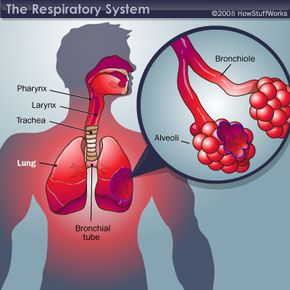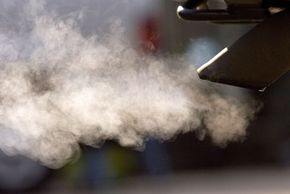Smoking is one of mankind's crueler pastimes. You try out cigarettes. You get addicted. You're unable to stop. Eventually, it's likely that cigarettes kill you. In the United States alone, more than 25 million men and 20 million women smoke. That's 24 and 21 percent of the entire population [source: American Heart Association]. What does this mean? That a lot of people are starving their hearts of the one thing it needs to function -- oxygen. We all know that our bodies need oxygen, but some of us may not really understand what that means. So here's a little respiratory 101:
Advertisement
We breathe in about 35 pounds of air through 20,000 breaths each day [source: Spokane Regional Clean Air Agency]. After we take it in, the air travels past the pharynx, larynx and down the windpipe, or trachea. From there, the trachea comes to a fork in the road and splits into two parts. These are called bronchial tubes, and they carry air into each lung. Along the way, small hairs, called cilia, and mucus clean the air up as best they can before it's deposited into the lungs.
Air we breathe is made up of different gases, and the most important to us is oxygen. The function of the lungs is to take this oxygen from the air and give it a one-way ticket to the bloodstream. The blood carries oxygen directly to the heart, and the heart sends that oxygen-rich blood throughout the body. Every cell in our body needs oxygen to function, so you can see why proper lung function is so important. The lungs also remove carbon dioxide from the air, and we breathe it back out into the atmosphere when we exhale. The lungs do their work with the help of millions of tiny, thin-walled air sacs called alveoli.
The oxygen concentration is already so high inside the alveoli that it just passes across the membrane into the pulmonary capillaries -- the body's smallest blood vessels. Enter hemoglobin -- the FedEx of proteins. It delivers oxygen in its trucks, or red blood cells. Inside the pulmonary capillaries, the hemoglobin has carbon dioxide bound to it and very little oxygen at first. But hemoglobin wants that oxygen, so it allows the O2 to bind to it by freeing up some room -- it releases carbon dioxide. Fortunately, it only takes fractions of a second for this gas exchange to take place. The carbon dioxide then leaves the alveolus when you exhale, and the oxygen-rich blood returns to the heart.
When you smoke, this whole process breaks down, and you end up starving your poor heart, and the rest of your body, of oxygen.
Advertisement




